When war came to a soccer field, there was no time to flee
The sirens that rang out across Majdal Sams as a rocket approached from Lebanon gave only a few seconds warning before it landed near the kids milling about in the field.
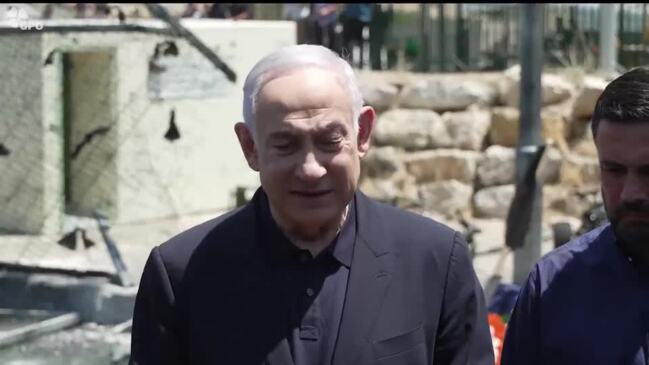
Local authorities in Majdal Shams recently began preparing for war to come to the village in the Israeli-controlled Golan Heights less than 5 miles (8km) from the Lebanese border. They installed a bomb shelter just steps away from the town soccer field.
Saturday evening, dozens of young people who had gathered at the field as the day was winding down couldn’t even make it that far.
Witnesses said the sirens that rang out as a rocket approached from Lebanon gave only a few seconds of warning before the explosive landed near the kids milling about by the fence around the field. Twelve young people were killed.
Rmah Awad, 20 years old, who was working at a jewellery shop in the village heard the alert and almost immediately afterwards a massive boom. A five-minute run separated him from the soccer field. He ran as fast as he could.
“I saw all the children in pieces,” he said.
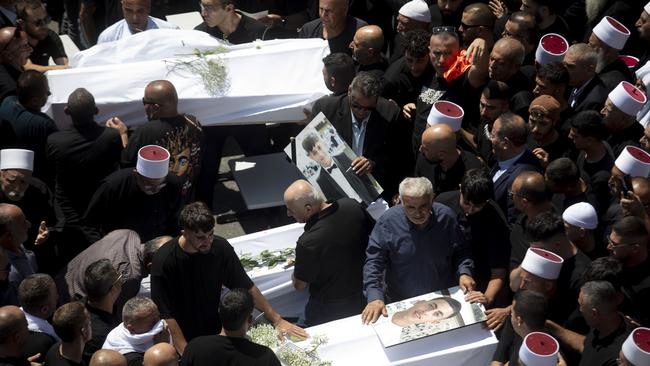
War had come to Majdal Shams, a village sandwiched between Syria and Lebanon. It is home to a community of Druze, an Arabic-speaking minority in Syria, Lebanon and Israel that practices a closely held religion that formed as an early offshoot from Islam.
After arriving at the field, Awad set about trying to help people, but they were in shock. Many were crying with their hands covering their faces or on their heads.
Emergency responders began to arrive minutes later. The effort would eventually include all 10 ambulances in the Golan Heights fleet and more. Israeli medic Idan Avshalom was one of the first to get to the scene.
“It was terrible,” he said. He saw body parts strewn around the playing field. Items were still on fire. Many of the wounded children and teenagers were dressed in soccer gear. He began triage and immediately determined several people were dead.
“They had the loss of human likeness,” he said, repeating the euphemism used by Magen David Adom, Israel’s emergency services operation, to mean injuries so catastrophic that it was impossible to identify the victim.
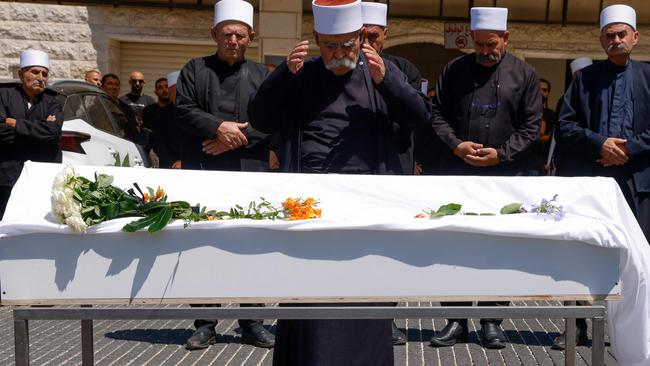
The rocket hit right on the sidelines. It left a small crater in the synthetic grass. The metal fence around the field was blown open, looking as if a large truck had driven through it. The rest of the field was largely untouched.
The dead were all children and teenagers. More than 40 people were wounded. The day after the blast, seven blackened electric scooters and bicycles remained at the impact site, unmoved from where they were when the rocket landed. Emergency workers would need two days to finish picking up the body parts.
The U.S. and Israel attributed the strike to the Iran-backed Lebanese militia Hezbollah, saying the rocket model was one used by the group and that it came from territory it controls. Hezbollah denied involvement with the strike but announced a number of other attacks on Israeli military targets that day, including ones in the vicinity.
The death toll brought to a head concerns that nearly 10 months of cross-border fire could spiral into a wider war. Hezbollah began firing rockets, missiles and drones into Israel after the Hamas-led attacks on southern Israel on Oct. 7 initiated the latest cycle of violence. Israel has responded with attacks on Hezbollah positions and commanders.
Both sides have sought to manage their actions to avoid triggering a war, but the strike on the soccer field shows that the risks of miscalculation are high. American-led mediators are making a diplomatic push to head off a broader regional war ahead of an anticipated Israeli retaliatory strike.
“We are at the lowest point,” said Kamal Abu Zeed, a father of three who had rushed to the strike site on Saturday after hearing the explosion from the other side of the village. There he said he saw the charred bodies of his neighbours’ children.
“Wherever the fire comes from, we need to send it back there,” he said, urging Israel’s government to take strong action.
Israeli Prime Minister Benjamin Netanyahu, visiting the site Monday, said, “Our response will come, and it will be severe.” Majdal Shams had been part of Syria until Israel seized the Golan Heights in 1967 and then annexed it in 1981, leaving it in internationally disputed territory despite the U.S.’s recognition of Israeli sovereignty in 2019. Its Druze residents are part of a tight-knit, cross-border community of one million or more people that doesn’t traditionally allow converts or intermarriage.
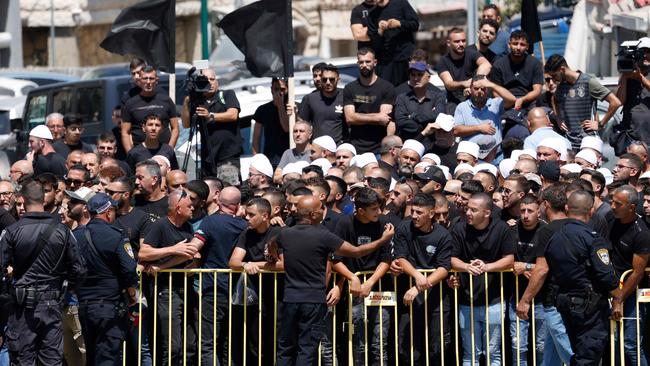
While many Druze in Israel proudly proclaim their citizenship and serve in the army, many in the Golan Heights still identify as Syrian, though that has shifted in the aftermath of Syria’s civil war and with younger generations adopting different views. Although most of the community declined the offer of Israeli citizenship in 1981, today about 20% have obtained Israeli citizenship, while the rest are permanent residents.
Not everyone in the village called for a strong response against Hezbollah. Some said they thought the Israeli government was using their tragedy as an excuse to escalate the conflict. When Netanyahu arrived at the site of the blast, he was greeted by an angry crowd that blamed him for prolonging the war and failing to defend their children.
“Murderer,” some yelled in his direction. The prime minister didn’t face the crowd and entered the soccer field through a back entrance to give a speech to a group of dignitaries and bereaved families from the area.
The sirens Saturday went off at 6.18pm. There was no organized match going on at the time. With school out for the summer, large numbers of kids had gathered and were just playing around on the field, residents said. Some may have tried to run and been blocked by the fence, which had a gate across from the opening to the bomb shelter, several residents said.
The crater left by the rocket was small, just about several feet in diameter and several inches deep.
In the attack’s immediate aftermath, frantic community members grabbed the injured and ran with them in their arms to three of Majdal Shams’s local clinics. Some of them were already dead, said Zaki Heller, a spokesman for Magen David Adom.
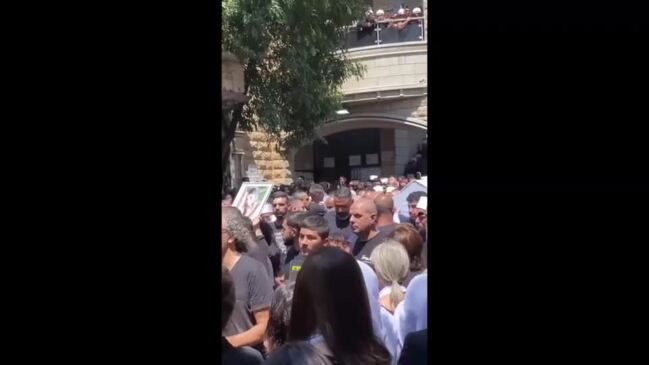
One of Magen David Adom’s medevac helicopters – limited by protocols against operating in an area under fire from rockets and drones – landed in a nearby town and took on board a boy who had been sedated and intubated. Military helicopters flew straight to the scene and evacuated casualties directly.
Three waves of airborne evacuations took casualties to Rambam Medical Care Campus in Haifa, northern Israel’s leading trauma centre, which had declared a pediatric limited mass casualty event.
Dr Mony Benifla, who heads pediatric neurosurgery for Rambam, operated on the boy who had been intubated and two other children with traumatic brain injuries caused by shrapnel. They all had multi-system trauma. One surgery required three teams to work concurrently, because of the risk to life caused by head, abdomen and leg wounds.
“They are all filled with ricochets, all their body,” Benifla said. One of his young patients lay just feet away in a medically induced coma. “We treat a lot of kids with trauma,” said Dr. Danny Eytan, the chief of Rambam’s pediatric intensive care unit where four of the five patients who arrived at the hospital are being treated. “This is different.” Devastated families crowded outside Eytan’s unit. Alongside them ran a banquet of food, barely touched. Standing near them was Sean Pero, a professional mixed martial arts fighter from northern Israel who grew up playing soccer on the Majdal Shams pitch with his extended family. Now one of them, a little girl, was in intensive care.
“I would like a strong retaliation, just that it would not go unnoticed, ” Pero said, echoing calls in the Druze community for the Israeli government to strike back hard against Hezbollah.
Rambam’s director, Dr. Michael Halberthal, said Saturday’s strike would only be a preview for devastation wrought on civilians by an expanded war between Israel and Hezbollah.
His hospital has prepared, setting up four operating rooms, a maternity ward, and a dialysis centre three levels down in its underground parking garage. Hospital beds are set up next to oxygen lines and suction. Doctors practice evacuating patients to the underground facility.
“We can see the effect of one missile, not even the biggest missile,” he said. “We know some of the missiles they have are much more powerful.” Eleven of the 12 children and teenagers who were killed in the blast were buried in Majdal Shams on Sunday. The twelfth was buried Monday, after emergency workers collected his scattered remains.
Awad, the jewellery-store worker, was wearing a black T-shirt the day of the mass funeral. The rest of the village dressed in black as well. Young men fixed black flags to street poles with zipties.
Many in the town said they wanted Israel to strike a decisive blow against Hezbollah in retaliation. Adam Mostafa, a volunteer medic who rushed to the scene on Saturday, said he wasn’t worried that retaliation might start a war.
“There’s already a war here,” he said.
Dow Jones




